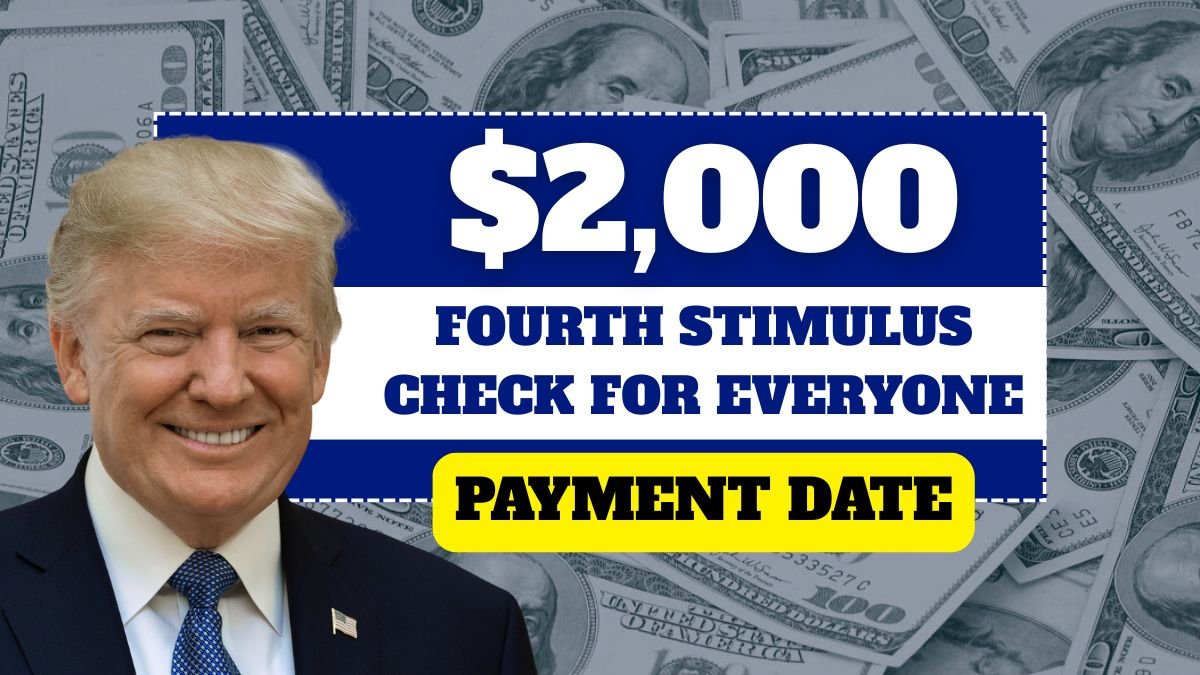In the year 2025, when inflation is still affecting the daily lives of ordinary American citizens, serious discussions have once again started in the corridors of Washington, D.C., regarding the fourth federal stimulus check. This time the proposed amount is $2,000 per eligible adult, which will be no less than a shower of relief for millions of families struggling financially. Although no bill has been passed yet, rising inflation, declining consumer demand and rising cost of living have forced lawmakers to once again look for options for economic support.
Who will be eligible for this potential fourth stimulus check?
If Congress approves this plan, it is expected that the eligibility criteria will be similar to the checks given earlier. The IRS (Internal Revenue Service) will once again be responsible for distributing this check and eligibility will be calculated based on recent tax returns or records of federal benefit receipts. Generally, those whose annual income is below a certain limit will be considered eligible. For example, unmarried individuals whose annual income is less than $75,000, married couples whose combined income is less than $150,000, and heads of households whose income is less than $112,500—all can get this check.
In addition, parents and caregivers who are responsible for caring for dependent children can also be given an additional amount of $500 to $1000 per dependent. Along with this, beneficiaries of Social Security, SSDI, and SSI are also likely to get checks this time. In this way, this scheme will not only provide relief to the working middle class but can also prove to be a lifesaver for the most vulnerable and deprived sections.
Why did inflation and economic stress raise the demand for stimulus again?
Although there has been some decline in the rate of inflation in the US as compared to 2022, the ground reality is that its impact is still being felt in the pocket of the common citizen. The prices of everyday items—like milk, bread, rent, gas, and health care—are still high. On the other hand, the salaries of most people have not increased in proportion to that, due to which their purchasing power is continuously decreasing.
Many reports also show that people are breaking their savings or taking loans to meet their basic living expenses. In such a situation, the demand for a fourth stimulus check has become not just a political issue but a social and economic necessity. Lawmakers are now realizing that if they do not take immediate action, this situation can become even more serious.
The elderly, disabled and low-income groups are being affected the most.
In this period of inflation, the most affected are senior citizens, disabled people, and low-income workers. Even though some amount has been increased in Social Security through COLA, i.e., Cost-of-Living Adjustment, this increase is proving to be insufficient to meet their real needs. There has been a tremendous increase in their medicines, medical tests, and housing expenses.
Many people of this class were already living on limited income, but now the situation has become such that their life has become difficult without government assistance. Therefore, the real purpose of this fourth stimulus check is not just to provide relief but also to make these classes financially sustainable.
Decline in consumer spending—Can the check bring back demand?
Inflation has not only affected household spending, but it has also directly affected the entire US market. There has been a sharp decline in consumer spending, especially in retailers and small businesses. When people avoid buying even the things they need, it directly slows down the pace of the economy. Economists believe that schemes like stimulus checks create demand in the market by putting immediate money in people’s pockets.
This gives orders to small businesses, keeps business going, and keeps the flow of money in the local economy. It works like a domino effect, activating the entire economic structure.
How much could the stimulus amount be this time?
The proposals that have come out so far state that the amount of the fourth check could be $2,000 per eligible adult. Apart from this, there is a possibility of getting an additional $500 to $1000 for dependents. However, the final amount will depend on what agreement is reached in Congress. Some proposals also include giving priority to those who are in more financial trouble.
If this amount is approved, it will be a financial relief for millions of families who are struggling to keep up with their expenses day by day.
When can the fourth stimulus check come?
No final law has been passed on this subject as of July 2025. If Parliament acts on this proposal in the second half of the year, it may take a few months for the IRS to arrange for its distribution. This has led to the estimation that this check can reach people by the end of 2025 or early 2026.
Those who have already opted for direct deposit may receive this amount first. Other people will be paid through check or debit card.
What options can there be if the check is not passed?
Even if this bill doesn’t pass, the government still has several other relief plans that can be extended:
- Expansion of Child Tax Credit—direct financial aid to families with children
- LIHEAP (energy assistance)—relief on electricity or heating bills
- Temporary increase in SNAP—additional benefits for food assistance
- Rent or housing relief—direct aid to tenants
- Unemployment assistance extension—relief for those who have lost their jobs
All of these plans reach the targeted beneficiaries and can also be passed relatively quickly.
How should you prepare if the fourth check comes?
While there is no guarantee yet, you can be ready for this check by doing some necessary preparations:
- Update your tax return—this will be the basis of your eligibility.
- Turn on the Direct Deposit option in the IRS so that the money is received quickly.
- Keep an eye on the official website of the IRS—avoid rumors and fraud.
- Use the “Get My Payment” tool to know the status of the payment.
Conclusion
The proposed fourth stimulus check in 2025 is not just a payment, but it can be an important step towards economic revival and social security. If it is passed, millions of families will get financial relief, and the US economy will get a new boost.
Until then, it is most important that people stay alert, keep their financial information updated and get information only from government sources. Whether this check comes or not, there are other schemes of the government that are working to provide relief to the needy.
FAQs
Q. Is a fourth stimulus check confirmed yet?
A. No, as of now, Congress has not passed any official legislation for a fourth stimulus check.
Q. How much could the fourth stimulus check be?
A. The proposed amount is $2,000 per eligible adult, with an additional $500–$1,000 per dependent.
Q. Who would qualify for the fourth stimulus check?
A. Eligibility may include single filers earning under $75,000, joint filers under $150,000, heads of household under $112,500, and Social Security, SSDI, or SSI recipients.
Q. When could the payments be sent?
A. If approved in late 2025, payments might start arriving by the end of 2025 or early 2026.
Q. Are there other support programs if the check doesn’t pass?
A. Yes. Alternatives may include expanded Child Tax Credit, LIHEAP, emergency SNAP boosts, rent relief, and unemployment extensions.


